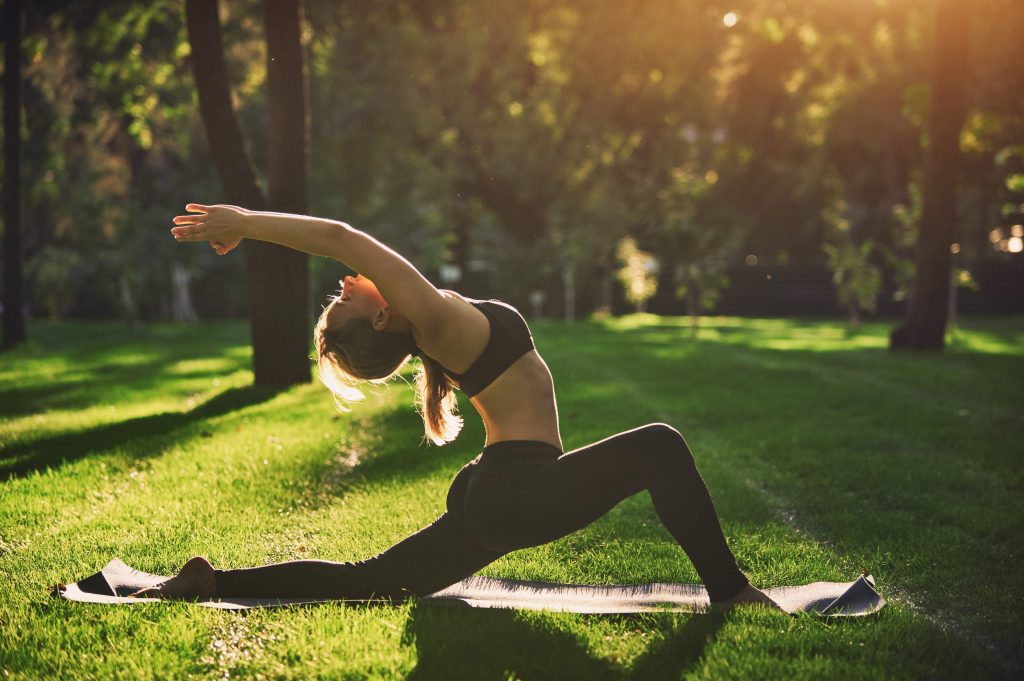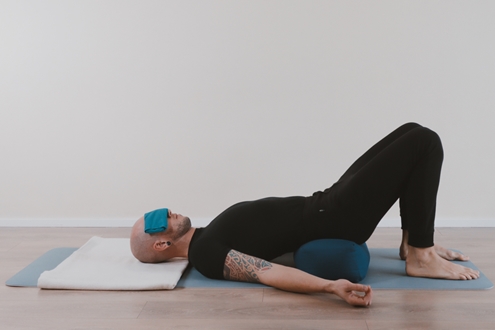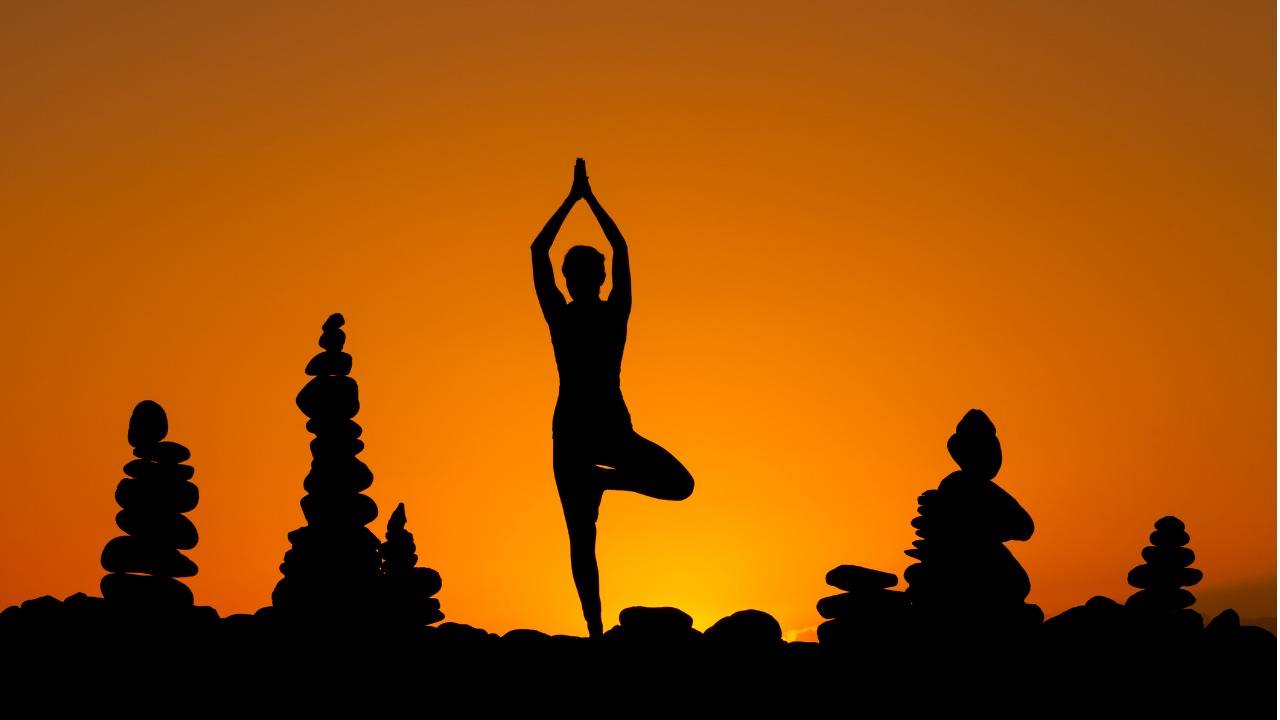Why Yoga in India? A Guide to Popular Types of Yoga
Author: Pratheesh ThomasDate: 26 Sep, 2025City: India
Yoga is not just a worldwide fitness craze; it is a deep practice that has its roots in India’s ancient spiritual customs. For thousands of years, India has been the center of yoga, where sages and seekers created methods to enhance physical health as well as achieve inner peace, mental clarity, and spiritual awakening. With its beginnings traced back to the Vedic era and later organized by masters like Patanjali, yoga in India is closely linked to the country’s culture, philosophy, and lifestyle.
Today, yoga flourishes in every part of India, from the peaceful ashrams of Rishikesh and the shores of Goa to contemporary studios in busy cities. Each location presents its unique style of practice, influenced by centuries of knowledge and tradition. Whether you are a novice eager to begin your journey or an experienced practitioner looking for deeper understanding, India offers a genuine and immersive yoga experience that is hard to find anywhere else.
1. Hatha Yoga

Hatha Yoga is a fundamental and traditional type of yoga, often seen as the entry point for newcomers. The term "Hatha" means "sun" (ha) and "moon" (tha), representing balance. A standard class emphasizes basic postures (asanas), breath control (pranayama), and relaxation methods, all done at a slow, gentle pace. In contrast to quicker, more intense styles, Hatha Yoga focuses on mindful movement and proper alignment, making it suitable for individuals of all ages and fitness levels. Its slower pace allows for both physical advantages—such as enhanced flexibility and strength—and mental benefits like tranquility, concentration, and stress relief.lower stress, and foster a calm, balanced mindset. It also serves as the foundation for many contemporary yoga styles.
Key Features of Hatha Yoga
-
Basic Practice – teaches essential yoga poses and methods.
-
Harmonious Approach – brings together body, breath, and mind.
-
Gentle Speed – more relaxed and easier than fast-paced yoga styles.
-
Physical Advantages – enhances flexibility, posture, and body awareness.
-
Mental Advantages – encourages relaxation, mindfulness, and reduces stress.
2. Ashtanga Yoga

Ashtanga Yoga is a demanding and organized style that follows a specific sequence of postures connected by breath (vinyasa).
Developed by K. Pattabhi Jois, it is recognized for its discipline, intensity, and emphasis on building strength, flexibility, and stamina.
A typical Ashtanga practice starts with sun salutations, then moves to standing, seated, and finishing poses—all done in the same order each time. This repetition creates a moving meditation that enhances focus, inner discipline, and self-awareness. Best for those who appreciate routine and challenge, Ashtanga Yoga provides both a tough workout and a deeply mindful experience.
Ashtanga Yoga Features
-
Consistent Sequence – always adheres to the same organized set of poses.
-
Breath and Motion – coordinated breathing (ujjayi pranayama) with smooth transitions.
-
Physically Demanding – enhances strength, endurance, and flexibility.
-
Discipline and Habit – repetition fosters consistency and self-control.
-
Meditative Movement – the established rhythm promotes concentration and awareness.
3. Vinyasa Yoga
Vinyasa Yoga is a lively and fluid style that
 connects movement with breath in a continuous flow. Often referred to as "flow yoga," it highlights smooth transitions between poses, resulting in a practice that resembles a moving meditation. In contrast to Ashtanga, which adheres to a set sequence, Vinyasa classes are more imaginative and diverse, with each teacher creating their own unique flows. This style enhances strength, flexibility, and endurance, while its rhythmic, breath-focused method encourages concentration and mindfulness. Vinyasa Yoga is perfect for those who appreciate variety, creativity, and an energetic, comprehensive workout.
connects movement with breath in a continuous flow. Often referred to as "flow yoga," it highlights smooth transitions between poses, resulting in a practice that resembles a moving meditation. In contrast to Ashtanga, which adheres to a set sequence, Vinyasa classes are more imaginative and diverse, with each teacher creating their own unique flows. This style enhances strength, flexibility, and endurance, while its rhythmic, breath-focused method encourages concentration and mindfulness. Vinyasa Yoga is perfect for those who appreciate variety, creativity, and an energetic, comprehensive workout.
Key Aspects of Vinyasa Yoga
-
Breath-to-Movement Flow – every pose shifts seamlessly with each inhale and exhale.
-
Creative Sequences – there is no set order, providing diversity in every session.
-
Dynamic Practice – elevates heart rate, enhances strength, and boosts endurance.
-
Mindful Rhythm – promotes awareness and concentration through breathing.
-
Accessible for Everyone – classes can vary from gentle to intense.
4. Iyengar Yoga

Founded by B.K.S. Iyengar, this style focuses on precision, alignment, and technique. Props like blocks, straps, and bolsters are frequently used to assist practitioners in attaining the correct posture, making it suitable for individuals of all ages and abilities. Iyengar Yoga is particularly helpful for those healing from injuries or looking for therapeutic assistance. With its attention to detail, the practice is both meditative and highly restorative.
-
Precision & Alignment – each pose is performed with great care to ensure the body is positioned correctly.
-
Props – items like blocks, straps, chairs, and bolsters assist individuals in achieving poses safely and comfortably, even if they have limited flexibility or are healing from injuries.
-
Accessibility – thanks to the use of props and a focus on technique, it is suitable for all ages and skill levels, including beginners or those facing physical challenges.
-
Therapeutic Benefits – it is frequently suggested for individuals with injuries, chronic pain, or health issues, as it prioritizes safe movement.
-
Meditative Quality – although it is not fast-paced, the intense focus on posture creates a calming and mindful experience.
5. Hot Yoga

Hot Yoga is done in a warm room (35–40°C / 95–105°F) and helps relax muscles, enhance flexibility, and promote detoxification through sweating. Bikram Yoga, a well-known type, consists of a set sequence of 26 poses. This style is perfect for anyone looking for a challenging workout that increases stamina and strength.
Highlights of Hot Yoga
-
Heated Room – Hot Yoga takes place in a warm setting, typically between 35–40°C (95–105°F), which causes the body to sweat significantly.
-
Flexibility & Muscle Relief – the warmth aids in relaxing tight muscles, making it easier to stretch and go deeper into poses.
-
Detox Effect – intense sweating is thought to assist in eliminating toxins from the body.
-
Bikram Yoga – this is one of the most well-known types of Hot Yoga, featuring a specific sequence of 26 poses and breathing techniques, always performed in a heated environment.
-
Intensity – Hot Yoga is ideal for those seeking a demanding, cardio-like yoga experience that helps burn calories and enhance stamina.
6. Kundalini Yoga

Kundalini Yoga is frequently referred to as the "yoga of awareness" since it aims to awaken the dormant energy (kundalini) thought to lie at the base of the spine. By using a mix of dynamic movements, controlled breathing, chanting mantras, and meditation, this practice addresses both the body and the mind. It emphasizes developing inner strength, emotional stability, and spiritual awakening rather than just perfecting physical postures. Many practitioners report feeling increased clarity, calmness, and a deeper connection to themselves and their surroundings.
Key Aspects of Kundalini Yoga
-
Energy Activation – aimed at stimulating and directing kundalini energy upwards through the chakras.
-
Integrated Practice – merges movement, breath exercises (pranayama), mantra singing, and meditation.
-
Comprehensive Benefits – enhances not just physical well-being but also mental clarity, emotional recovery, and spiritual advancement.
-
Life-Changing Experience – assists practitioners in relieving stress, overcoming emotional barriers, and enhancing self-awareness.
-
Spiritual Emphasis – frequently selected by individuals looking for deeper significance, mindfulness, or personal growth beyond just physical fitness.
7. Restorative Yoga

Restorative Yoga is a gentle and passive practice aimed at encouraging deep relaxation and healing. With the use of props like bolsters, blankets, and blocks, the body is completely supported, allowing each pose to be held comfortably for several minutes. This stillness stimulates the parasympathetic nervous system, which helps to reduce stress, lower tension, and enables the body to recover more profoundly. Restorative Yoga is particularly helpful for individuals dealing with stress, illness, or injury, and is frequently suggested to enhance sleep, mental clarity, and overall well-being.
Key Features of Restorative Yoga
-
Deep Relaxation – focuses on rest rather than effort, enabling the body and mind to completely release tension.
-
Supported Poses – props offer comfort and stability for extended postures.
-
Healing Focus – promotes recovery from stress, fatigue, illness, or injury.
-
Nervous System Balance – triggers the “rest and digest” response for tranquility and rejuvenation.
-
Holistic Benefits – enhances sleep, lowers anxiety, and boosts clarity and concentration.
8. Yin Yoga
Yin Yoga is a slow and meditative practice that targets the body’s deep connective tissues, such as fascia, joints, and ligaments. In contrast to more dynamic yoga styles, Yin requires holding poses for 3 to 5 minutes or even longer, which helps the body to gradually release tension while the mind fosters stillness. This calm and reflective method not only enhances flexibility and energy circulation (chi/prana) but also promotes mindfulness and patience. Yin Yoga is often regarded as a perfect complement to more vigorous styles like Vinyasa or Ashtanga, aiding practitioners in restoring balance in both body and mind.
Key Aspects of Yin Yoga
-
Extended Poses – each position is held for multiple minutes to reach deep tissues.
-
Focus on Connective Tissues – targets fascia, joints, and ligaments instead of muscles.
-
Mindful Practice – fosters stillness, patience, and self-awareness.
-
Flow of Energy – encourages the free movement of chi/prana throughout the body.
-
Supporting Style – harmonizes active, strength-oriented practices with calm, restorative work.
9. Power Yoga

Power Yoga is a contemporary style focused on fitness, drawing inspiration from traditional Ashtanga Yoga. Recognized for its quick pace and intensity, this practice prioritizes strength, stamina, and endurance while providing a cardiovascular workout. Unlike Ashtanga, Power Yoga does not adhere to a set sequence, allowing instructors to create dynamic and varied classes. With an emphasis on movement and energy, Power Yoga offers a comprehensive workout that enhances muscle tone, flexibility, and overall fitness. It is particularly favored by athletes and individuals looking for a demanding, high-energy class that combines elements of both workout and yoga practice.
Key Features of Power Yoga
-
Quick Flow – merges breathing with movement in an energetic sequence.
-
Strength & Stamina – enhances muscle tone, endurance, and physical toughness.
-
Cardiovascular Advantages – raises the heart rate for a workout feel.
-
Varied Sequencing – classes differ, providing creativity and diversity.
-
High Energy – ideal for athletes or anyone looking for an active, sweat-producing practice.
10. Sivananda Yoga
Sivananda Yoga is a complete spiritual practice based on traditional yoga teachings. Created by Swami Sivananda and his student Swami Vishnudevananda, it focuses on a five-point method for healthy living: correct exercise (asanas), correct breathing (pranayama), correct relaxation, correct diet, and positive thinking through meditation. A typical class starts with sun salutations and features a well-rounded series of postures, breathing exercises, and deep relaxation, all designed to align the body, mind, and spirit. Unlike styles that prioritize fitness, Sivananda Yoga offers a full lifestyle approach, making it perfect for those seeking to use yoga as a means to achieve overall balance, wellness, and inner tranquility.
Key Aspects of Sivananda Yoga
-
Five-Point Philosophy – includes exercise, breathing, relaxation, diet, and positive thinking/meditation.
-
Holistic Approach – extends beyond the physical to encompass lifestyle and mindset.
-
Structured Classes – usually feature sun salutations, asanas, pranayama, and meditation.
-
Spiritual Focus – based on traditional yoga teachings and mindfulness.
-
Balanced Living – aimed at individuals looking for harmony in both body and mind.
11. Aerial Yoga

Aerial Yoga is a contemporary and inventive style that employs silk hammocks hanging from the ceiling to assist the body in yoga poses. Participants can execute movements either partially or entirely in the air, merging traditional yoga with aspects of acrobatics and Pilates. The hammock aids in enhancing strength, flexibility, and balance, while also facilitating spinal decompression as the body dangles freely. This enjoyable practice is particularly attractive to individuals seeking to experience something different, relieve pressure on the joints, or introduce an element of fun into their yoga practice.
Key Features of Aerial Yoga
-
Hammock Support – silk material is utilized to assist or intensify poses.
-
Spinal Decompression – being inverted helps alleviate pressure on the spine.
-
Strength & Flexibility – develops core and upper body strength while improving mobility.
-
Playful Experience – adds excitement and enjoyment to a yoga session.
-
Joint-Friendly – lessens strain, making poses easier to perform.
12. Prenatal Yoga
Prenatal Yoga is a unique practice created for expectant mothers, emphasizing gentle movements, mindful breathing, and relaxation. The routines are thoughtfully crafted to alleviate typical pregnancy issues like back pain, tiredness, and swelling, while also enhancing posture and blood flow. In addition to the physical advantages, Prenatal Yoga promotes emotional and mental health, assisting mothers-to-be in managing stress, connecting with their evolving bodies, and getting ready for childbirth with increased confidence. This safe and supportive practice encourages a feeling of tranquility and strength during pregnancy.
Main Aspects of Prenatal Yoga
-
Gentle Stretching – eases tension and aids movement during pregnancy.
-
Breathwork – encourages relaxation and readies mothers for labor.
-
Safe Modifications – poses are adjusted to fit the body’s transformations.
-
Emotional Support – helps lessen stress and anxiety while fostering mindfulness.
-
Preparation for Childbirth – builds strength and promotes calmness for delivery.
13. Acro Yoga
Acro Yoga is a lively and fun practice that merges yoga, acrobatics, and Thai massage. It is done in pairs or groups, where one person acts as the base, lifting another into yoga-inspired poses, and a third person may act as a spotter for safety. This practice offers more than just physical advantages—it encourages trust, communication, and teamwork, making it popular among couples, friends, or adventurous yogis. On a physical level, Acro Yoga enhances strength, flexibility, and balance, while on an emotional level, it fosters a sense of connection and enjoyment.
Key Features of Acro Yoga
-
Partner Practice – includes a base, a flyer, and occasionally a spotter.
-
Blend of Disciplines – combines yoga, acrobatics, and Thai massage methods.
-
Physical Benefits – enhances strength, flexibility, and balance.
-
Trust & Communication – fosters strong connections between partners.
-
Playful & Adventurous – introduces variety and excitement to conventional yoga.
Conclusion
Yoga transcends mere physical movement—it's an inward journey, and there is no better place to initiate (or enhance) that journey than India. With its profound traditions and deeply ingrained wisdom, India provides not only a diverse array of yoga styles but also a sense of connection that is difficult to replicate elsewhere.
From the spiritual calm of Rishikesh to the coastal energy of Goa, the peaceful retreats in Kerala, and the disciplined schools in Mysore, the country is full of unique and inspiring yoga destinations in India. Each location presents its own unique rhythm, its own instructors, and its own method of facilitating a deeper connection—with oneself and the surrounding world.
Suggested Read: Top 10 Tourist Destinations in India
FAQs—Frequently Asked Questions
1. Why is India famous for yoga?
India is famous for yoga because it is its place of origin, rooted in ancient spiritual and philosophical traditions. It offers authentic teachings from renowned gurus and sacred texts like the Yoga Sutras and Bhagavad Gita. With rich cultural integration and iconic yoga destinations like Rishikesh and Mysore, India provides a deep, holistic yoga experience.
2. Which state is known as yoga City in India?
Rishikesh, located in the state of Uttarakhand, is known as the "Yoga City of India" (or the "Yoga Capital of the World"). It’s famous for its spiritual atmosphere, riverfront ashrams, yoga schools, and annual International Yoga Festival, attracting yoga seekers from around the globe.
3. What are the 5 main benefits of yoga?
Improves flexibility and strength
Reduces stress and anxiety
Boosts focus and mental clarity
Supports overall physical health
Enhances relaxation and well-being
4. Can yoga reduce belly fat?
Yes, yoga can help reduce belly fat by boosting metabolism, improving digestion, and strengthening core muscles. While it may not burn calories as fast as intense cardio, regular practice combined with a healthy diet and lifestyle promotes overall fat loss and a toned midsection.
5.What is the best time of day to do yoga?
The best time to do yoga is early morning, just after waking up. This time helps energize the body, clear the mind, and set a positive tone for the day. However, practicing in the evening can also be great for relaxation and stress relief before bedtime. Ultimately, the best time is whenever you can practice consistently.




 connects movement with breath in a continuous flow. Often referred to as "flow yoga," it highlights smooth transitions between poses, resulting in a practice that resembles a moving meditation. In contrast to Ashtanga, which adheres to a set sequence, Vinyasa classes are more imaginative and diverse, with each teacher creating their own unique flows. This style enhances strength, flexibility, and endurance, while its rhythmic, breath-focused method encourages concentration and mindfulness. Vinyasa Yoga is perfect for those who appreciate variety, creativity, and an energetic, comprehensive workout.
connects movement with breath in a continuous flow. Often referred to as "flow yoga," it highlights smooth transitions between poses, resulting in a practice that resembles a moving meditation. In contrast to Ashtanga, which adheres to a set sequence, Vinyasa classes are more imaginative and diverse, with each teacher creating their own unique flows. This style enhances strength, flexibility, and endurance, while its rhythmic, breath-focused method encourages concentration and mindfulness. Vinyasa Yoga is perfect for those who appreciate variety, creativity, and an energetic, comprehensive workout.




